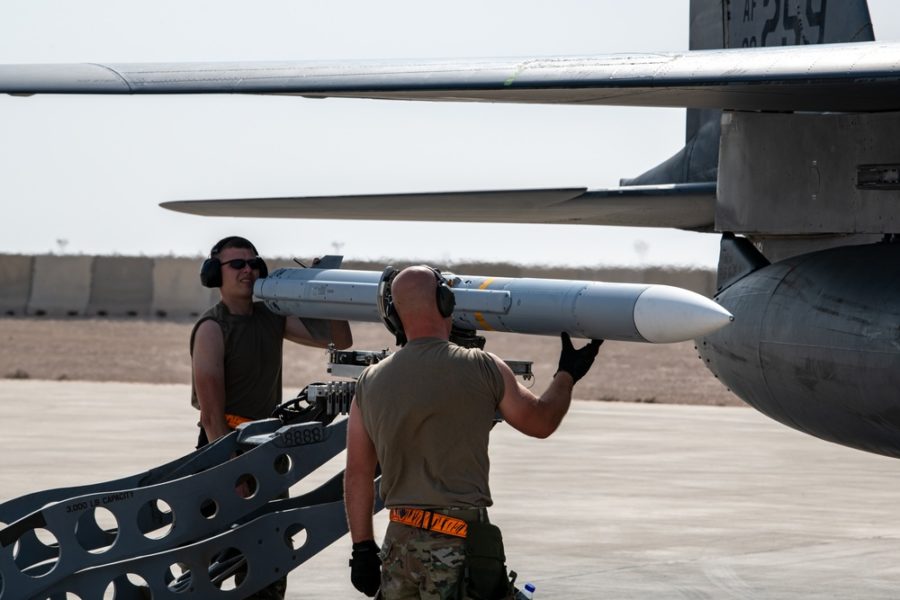AMRAAM is an active, radar-guided, medium-range, supersonic air-to-air missile. It is a joint USAF-Navy follow-on to the AIM-7 Sparrow with launch-and-leave capability. The AIM-120B is an upgraded, re-programmable variant of the original missile.
The AIM-120C incorporates smaller control surfaces for internal carriage on F-22 and F-35 and a high- angle off-boresight (HOBS) launch capability. AIM-120D offers improved range, GPS-assisted guidance, updated data links, and jam resistance in addition to greater lethality. Ongoing upgrades will further enhance weapon performance and electronic protection.
The second phase of the AIM-120D System Improvement Program (SIP II) completed operational testing and was fielded in 2020. SIP III completed operational testing in 2022 and is planned for timely fielding to keep pace with emerging threats. Ongoing development also includes Form, Fit, and Function (F3R) mods and replacing obsolete electronic elements. An F-15E conducted the first of five live-fire tests of the resulting AIM-120D3 on June 30, 2022, paving the way for production and fielding.
In 2019, USAF announced it is developing the AIM-260 Joint Air Tactical Missile (JATM) with the Navy to replace AMRAAM with a longer-range, more capable weapon to counter high-end threats.
USAF successfully demonstrated an AIM-120 using passive infrared search and track (IRST) in lieu of radar against an airborne target in 2021, and an F-15E fired the first updated F3R AIM-120D3 in a live-shot against a QF-16 on June 30, 2022. The F-15EX fired an AIM-120D for the first time as part of integrated testing at Eglin Jan. 25, 2022. FY24 begins a multiyear/large lot procurement boosting USAF production from 320 to 457 AIM-120Ds.
Contractors: Raytheon; Northrop Grumman; Nammo Group (propulsion).
First Flight: December 1984.
Delivered: 1988-present.
IOC: September 1991; July 2015 (120D).
Active Variants: •AIM-120B. Upgraded, reprogrammable variant of AIM-120A. •AIM-120C. Production variant optimized for the F-22/F-35. •AIM-120D. Latest variant with GPS guidance, improved range, lethality, and jam-resistance.
Dimensions: Span 1.7 ft, length 12 ft, diameter 7 in.
Propulsion: Boost-sustain solid-propellant rocket motor.
Performance: Supersonic, range 20+ miles.
Guidance: Active radar terminal/inertial midcourse.
Warhead: HE blast-fragmentation.
Integration: F-15C/D/E, F-16C/D, F-22A, F-35A.
